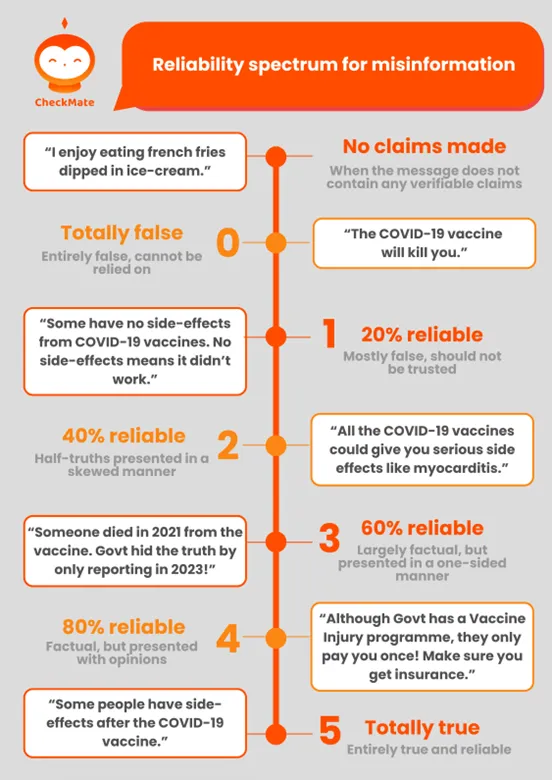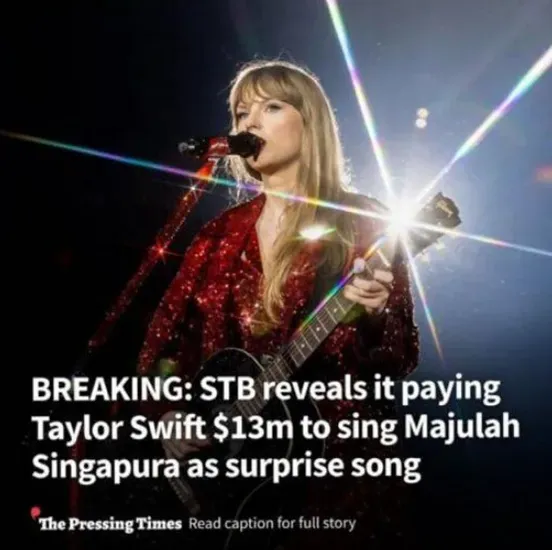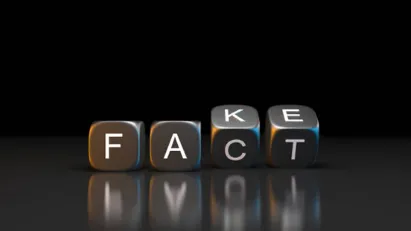In this article, we will share tips on how to identify different types of messages/news online to discern scams and misinformation, as well as examples of these scams/misinformation messages that have been circulating in the digital space recently.
Scams
Scam messages are deceptive communications designed to trick you into sharing personal information, giving money, or clicking harmful links. They can appear as emails, texts or social media messages, often pretending to be from trusted organisations like banks, delivery services or government agencies.
Scam messages typically have the following traits:
- Contain a call to action or request for further engagement
- Ask for money or personal information
- Contain an attractive offer such as a prize or money
- Could require urgent action
- Contain strange grammar or spelling mistakes
- Include a link that is most likely shortened or scrambled

Illicit
Illicit messages refer to advertisements that are linked to potential illicit activities, such as moneylending, online gambling or sexual services.
Common examples include:

Misinformation
When evaluating a piece of information or message online, it's important to recognise that not all information is strictly 100% true or 100% false. Instead, reliability often exists on a spectrum. Some content may be entirely accurate, while others could be partially true, misleading or completely false.
For example, a piece of information might include verified facts but present them out of context to distort meaning. Alternatively, a claim could be based on outdated or incomplete data, making it less reliable. Understanding this nuance helps you approach fact-checking more critically.
Look for cues like credible sources, balanced reporting, and corroboration from multiple trustworthy outlets. Avoid assuming that just because a claim seems plausible or is widely shared, it must be true. Fact-checking isn’t just about finding "yes" or "no" answers—it’s about assessing how trustworthy a piece of information is and where it falls on the reliability spectrum.

Satire
Satire messages refer to politically incorrect information, which often contains very exaggerated claims or caricatures of people. Satirical content may not be entirely factual and is likely to be social commentary.
An example of satire:

Marketing/Spam
A spam text is a text message sent to market a particular product or service or event. They are usually unsolicited. While typically harmless, they could contain suspicious looking links:
Examples include:
- “<ADV>
Singapore’s medical cost is always rising. Would you want to protect your savings and enjoy 100% medical bill reimbursement? Reply Y for more info." - "LIMITED TIME till end of this month!Save up to $3000 on your self care.Ask your Hairstylist or https://www.99percenthairstudio.com/super-savings."
- “<ADV>
Congrats Ming! You’re one of our 3 lucky winners to receive your beauty gifts worth $566. Redeem @ https://t1.sg/uXXa NOW! 1. Ming 2. Cindy T 3. Zi Hui L T&Cs apply. UNSUB sg@bonusrevpartners.com"
After reading this article, if you feel equipped to identify scams and misinformation, why not put your knowledge to good use? Report suspicious messages, claims, or content to the CheckMate WhatsApp bot here, where your submissions will help add valuable data to our message database for more efficient and faster fact-checking for our users. You can also share CheckMate with your friends and loved ones, to help them separate fact from fiction, and stay safe online or take it a step further - join CheckMate as a volunteer fact-checker here and contribute to debunking scams and misinformation, making the digital world a safer place for everyone!
Useful Links
- CheckMate Website
- Join CheckMate as a fact-checker
- Take Note When Fact-checking Information Online













